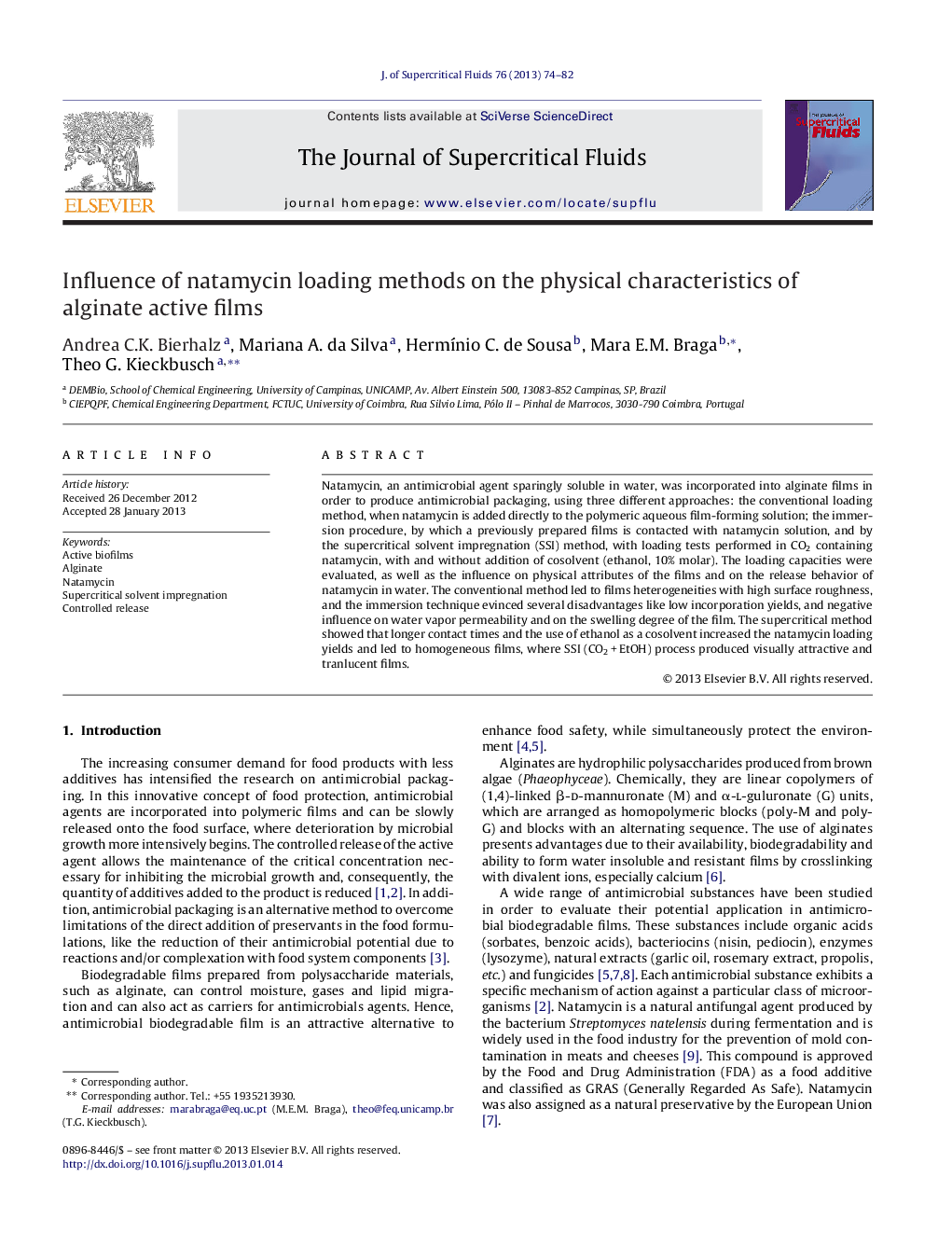| Article ID | Journal | Published Year | Pages | File Type |
|---|---|---|---|---|
| 230858 | The Journal of Supercritical Fluids | 2013 | 9 Pages |
Natamycin, an antimicrobial agent sparingly soluble in water, was incorporated into alginate films in order to produce antimicrobial packaging, using three different approaches: the conventional loading method, when natamycin is added directly to the polymeric aqueous film-forming solution; the immersion procedure, by which a previously prepared films is contacted with natamycin solution, and by the supercritical solvent impregnation (SSI) method, with loading tests performed in CO2 containing natamycin, with and without addition of cosolvent (ethanol, 10% molar). The loading capacities were evaluated, as well as the influence on physical attributes of the films and on the release behavior of natamycin in water. The conventional method led to films heterogeneities with high surface roughness, and the immersion technique evinced several disadvantages like low incorporation yields, and negative influence on water vapor permeability and on the swelling degree of the film. The supercritical method showed that longer contact times and the use of ethanol as a cosolvent increased the natamycin loading yields and led to homogeneous films, where SSI (CO2 + EtOH) process produced visually attractive and tranlucent films.
Graphical abstractFigure optionsDownload full-size imageDownload as PowerPoint slideHighlights► Antimicrobial packaging based on alginate films. ► Natamycin was loaded into alginate films by SSI. ► Cosolvent increased the natamycin loading yields and led to homogeneous films.
